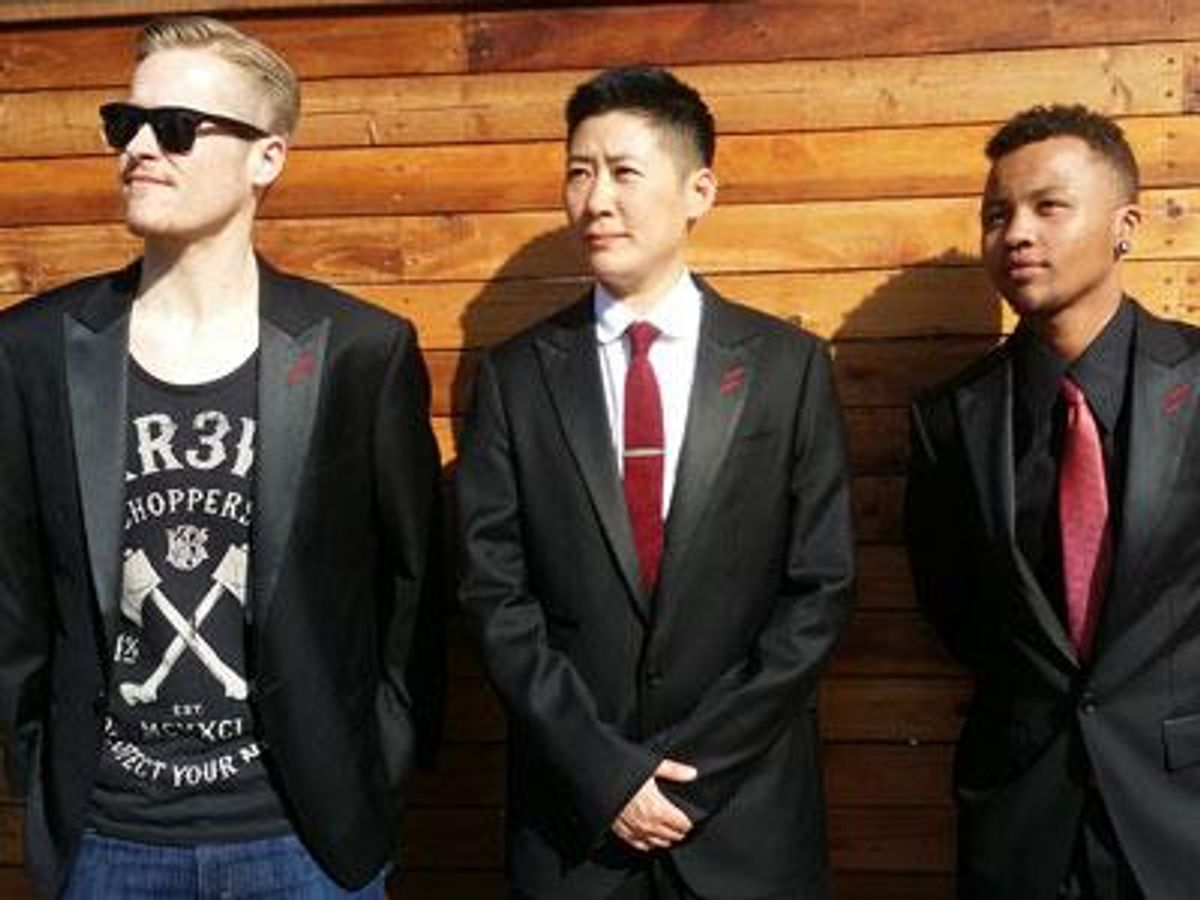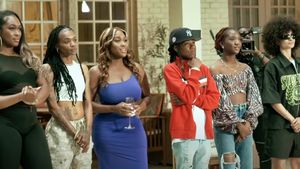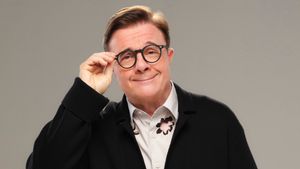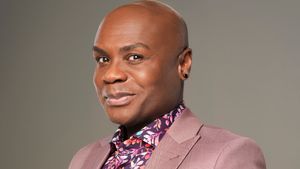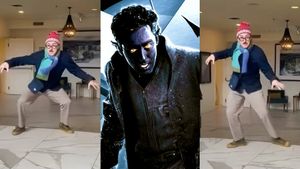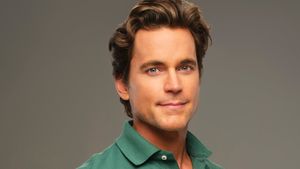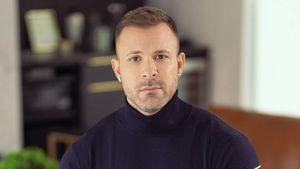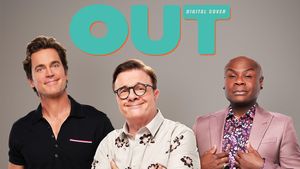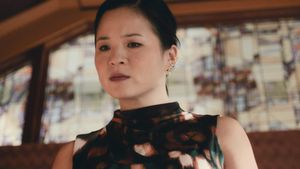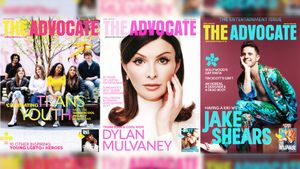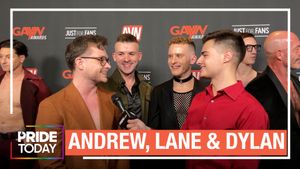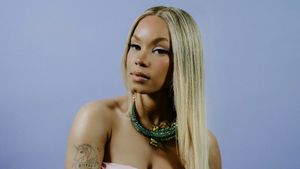All Rights reserved
By continuing to use our site, you agree to our Private Policy and Terms of Use.
I've always loved suits. The wool. The cut. The texture. As a little girl, I'd watch my father straighten his tie and would mimic the motions in the mirror after he left for work. I'd stare at my reflection: my high cheekbones, my long hair, imagining what I'd look like with a stronger jaw line or a crew cut. My family eventually began to tease me about my so-called vanity, but they had no idea what was really going on in my head. I was trying to picture myself out of the little girl dresses and into miniature versions of blazers and loafers.
Fast-forward through high school, college, and business school: I had come out of the closet as trans/genderqueer. And, since I never had that father-son moment of being taken to a store to be fitted for my own suit, I began the arduous task of trial-and-error in suit buying. In the last 15 years, I've been belittled and treated with disrespect throughout this process. There were the tailors that kept trying to order me women's suits, and even in the best-case scenarios (I found a place in Los Angeles that specializes in suits for shorter men), the shoulders were still too wide, and the cuts still managed to show off the curves I was trying to minimize with binders. It was time to make a change.
Trending stories
Coincidentally, not only does this mark the 15th anniversary of my first suit, but also the 15th anniversary since Boys Don't Cry ripped a hole in the heteronormative world. I was lucky enough to be in the audience during Kimberly Peirce's acceptance speech for last year's Outfest Achievement Award when she turned to the topic of dressing up for the Oscars:
"The one thing that I knew was that it was about dressing up for the red carpet. The men wore tuxedos, the ladies wore dresses, and the most often asked questions was, 'Who dressed you?' I also knew that if you were dressed poorly commentators like Joan Rivers would stamp disaster on your face. ... I'm not quite a guy, and I certainly ain't a lady. I'm a butch. And I like to think an old-school butch. So that means I dress somewhere between a girl and a boy, a tomboi. ... I couldn't afford expensive clothes back then, and if I went with the clothes I had, I definitely would have been underdressed. And if I wore the standard gown or the tuxedo I would have been cross-dressed. I had just made a movie about a female-bodied person who had lived and died for dressing as a man, and here I was, a queer-bodied person used to dressing queer, trying to fit into this crazy mainstream event to represent my queer movie. I felt like the poor kid coming to the table hoping that I'd pick the right fork."
My company, Sharpe Suiting, was still in its beginning stages, but what Peirce said just reinforced my determination to create a place where anyone, of any gender identity, could find formal attire that would represent who they actually are, not the box that society was trying to stick them in.
With the overturning of the Defense of Marriage Act came the maelstrom of weddings, and friend after friend asked for help in finding them a good suit. Sharpe Suiting, already in the works but not yet in production, wasn't of much help yet, so off we went to the discount warehouses, boutiques, and tailor shops.
Here is a prime example that sums up the basic experience that all of us non-conformists still go through: My good friend Mika is a 5-foot-8 butch -- handsome, confident, with a smile that can light up a room, and broad shoulders that anyone M.O.C (masculine of center) would envy. Already turned away from the tailor shops, we finally decided to go to a suit outlet that guaranteed they had something for anyone, of any size. After a few hours and a dozen suits to no avail, the salesman finally nonchalantly declared, "I'm sorry, she does not fit anything we have in the store." Mika, next to me, seemed to have shrunk by a foot as the disappointment and shame radiated from her, her abundant self-confidence all but gone in the face of this clerk. Unable to suppress my anger at the utter lack of empathy, it was all I could do to fling back, "Maybe it's the other way around. Your store does not have any suits that fit her."
And that is the issue. We have come such a long way since Brandon Teena and Boys Don't Cry broke open to the wider world what it can mean to be genderqueer. DOMA is overturned. "Don't ask, don't tell" is repealed. The LGBTQ experiences are becoming normalized as we, as a group, are slowly but surely being brought into the mainstream. Films are no longer just about "coming out." We are already honest about who we are.
Yet, as we add to the list of proud queer celebrities on the red carpet, writers on dust covers, and politicians on the news -- not to mention those who may not be famous but are just living their lives in the office, out to dinner, and marrying those who they choose to love -- there are still only a handful of companies worldwide that can accommodate the masculine-leaning person.
If menswear and women's wear are polar ends of the fashion spectrum, the potential and opportunities for queer fashion comprises everything in between. And I can only say I'm so grateful to be a part of this much-needed movement.
This past weekend, I witnessed Mika marry the woman of her dreams in a handsome blue suit that depicted all the characteristics that represent her. I was so content to see a few other "bros" beaming and looking dashing in their Sharpe suits among the crowd of friends and family. It gives me hope that in another 15 years, anyone -- butch, twink, trans, queer, or cisgender -- can represent the best dressed version of who they really are, and it will celebrated.
LEON WU is the founder and CEO of Sharpe Suiting, a custom-tailored suit company that caters to the queer community, which has launched a Kickstarter campaign ending November 18 to grow a ready-to-wear retail line. Find out more at SharpeSuiting.com.

